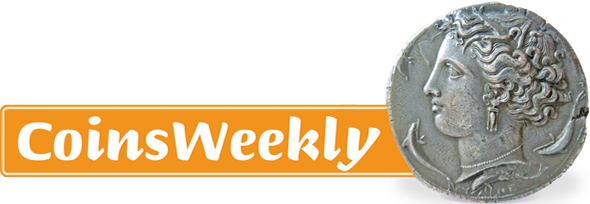Human Faces Part 3: The Nymph of the Spring Arethusa
For centuries the nymph Arethusa had been the beautiful face of the city of Syracuse. Here you will get information why she figured on the Syracusan coins.
For centuries the nymph Arethusa had been the beautiful face of the city of Syracuse. Here you will get information why she figured on the Syracusan coins.
Why is it that for centuries – or rather thousands of years – the head has served as the motif for the side of a coin? And why has this changed in the last 200 years? Ursula Kampmann poses these questions in her book ‘MenschenGesichter,’” from which the texts for our new series are taken.
Josephus tells us of a most interesting meeting in Tiberias, apparently convened by Agrippa I (37-44 CE), grandson of Herod the Great, probably around 42 CE…
Sex sells. That is common knowledge to the yellow press and tour guides alike, as early as ancient times. Already the Corinthians cashed in on that and promoted a tourist attraction of a particular kind: the tomb of the famous courtesan Laïs…
England’s Portable Antiquities Scheme is the most successful program on coin finds world-wide. No other country has won so many supporters to …
Part 3: Electrotypes
The last two parts on news from the forgery front have dealt with fakes that have been produced by newly cut dies and with cast fakes. This part is dedicated to a third kind of fakes: the electrotypes.
You will surely recognize …
On March 8th, 2010, Gorny & Mosch will present a specimen of the mysterious key series of the early coin production. The Phanes stater from a private collection in Israel is estimated at 150.000 Euros. It is the …
A coin of Trajan shows a temple for Honos in great detail. Honos? You don’t know this Roman deity? Join us and you will get to know her…
Beyond his name, there’s very little known about Teutamados. What we do have, however, is a splendid tetradrachm minted for him. Based on this, he was evidently a Paionian ruler.
A huge elephant is depicted on the weight that was auctioned off on 18th December 2013 in auction sale Gorny & Mosch 218 – Ancient Art. It is of interest not just to the art lover but to everyone concerned with ancient metrology. After all, both the shekel and the drachm is based on the mine, i.e. the unit represented by this weight.
We are the bridge connecting the international numismatic world. Our readers include collectors, professional coin dealers and researchers, as well as all those involved in coin production. We are read in 170 countries! We provide you with information on everything you want to know about the subject of money – from antiquity to the present day. And much more...
Follow us
You need to load content from reCAPTCHA to submit the form. Please note that doing so will share data with third-party providers.
More InformationYou are currently viewing a placeholder content from Facebook. To access the actual content, click the button below. Please note that doing so will share data with third-party providers.
More InformationYou are currently viewing a placeholder content from Instagram. To access the actual content, click the button below. Please note that doing so will share data with third-party providers.
More InformationYou are currently viewing a placeholder content from X. To access the actual content, click the button below. Please note that doing so will share data with third-party providers.
More Information